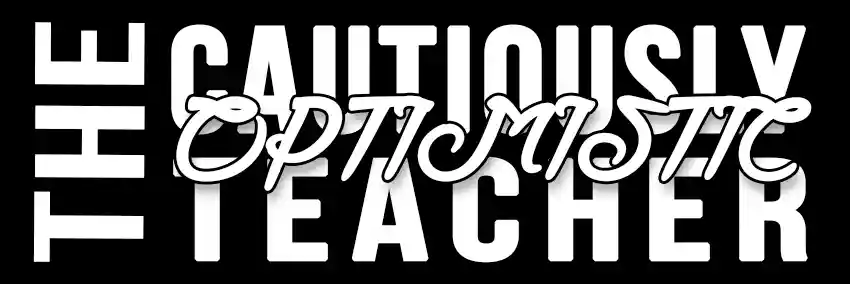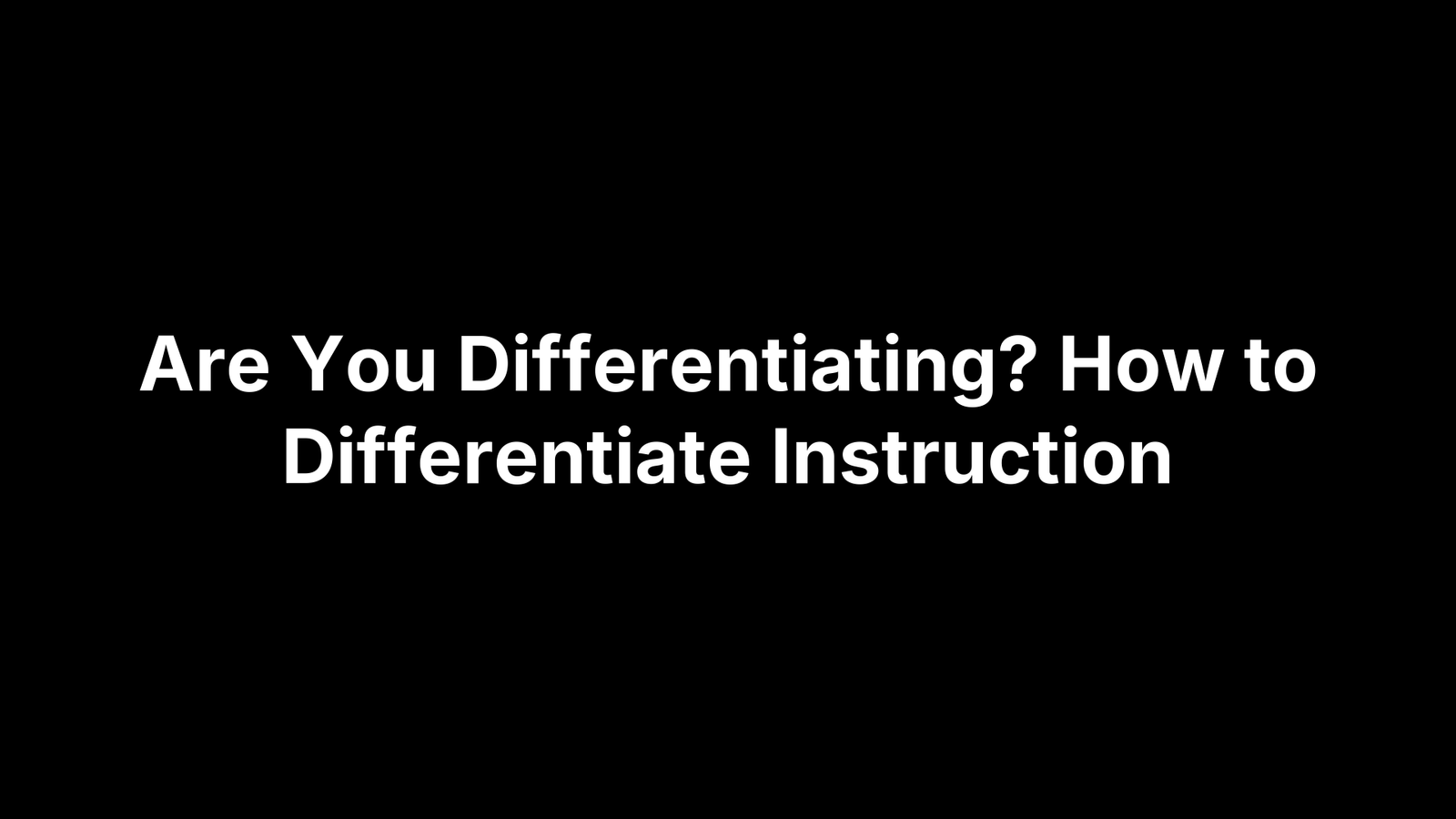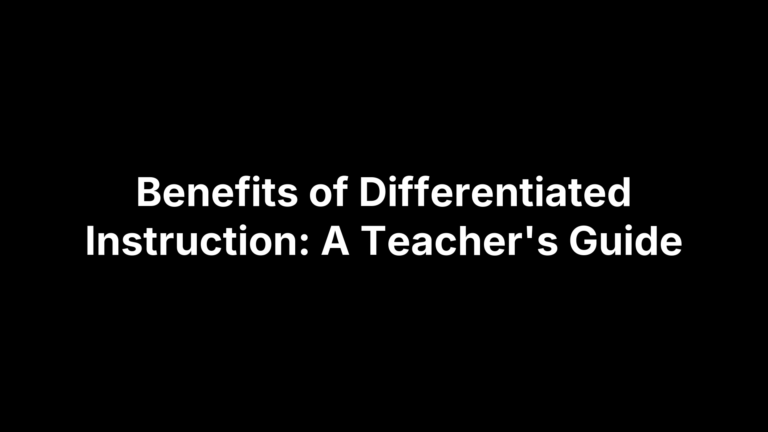Are You Differentiating? How to Differentiate Instruction
Thirty students, one lesson, many starting points. Differentiated instruction is the practical answer: planning for learner variability. You adjust what students learn and how they access it (content), how they make sense of it (process), how they show it (products), and the conditions for learning (environment). Decisions hinge on readiness, interests, and learning profiles, guided by ongoing assessment and flexible grouping. It’s not 30 lesson plans or “watering down”—it’s teaching up with smart scaffolds.
Wondering how to differentiate instruction without doubling your workload? This guide pairs a crisp overview of the essentials with concrete moves you can use tomorrow: a reusable planning cycle, quick‑win strategies, flexible grouping that works, assessment routines that don’t bury you, and classroom examples in ELA, math, science, and social studies. We’ll also clarify UDL, accommodations, and modifications, flag common pitfalls, and share time‑saving tools (including AI). Let’s get practical.
Differentiation at a glance: key principles and language
Before you worry about how to differentiate instruction, align on the core terms. Differentiation is a proactive plan to meet learner variability by adjusting what students learn, how they learn, how they show it, and the conditions for learning. Choices are driven by who’s in front of you, using quick formative evidence and flexible groups. It’s not lowering rigor; it’s raising access.
- Content: What students learn and how they access information.
- Process: Activities that help students make sense of content.
- Products: Varied ways students demonstrate understanding.
- Environment: Routines, space, and norms that enable learning.
- Student inputs: Readiness, interests, and learning profiles guide decisions.
- Ongoing assessment + flexible grouping: Quick checks drive fluid, purpose-based groups.
- Teach up + scaffolds: High expectations with targeted supports, not ceilings.
Differentiate content: what students learn and how they access it
Content is the “what” students learn and the on‑ramps you provide to meet the same standard. If you’re wondering how to differentiate instruction at the content level, think access—not alternate standards. Start by naming the must‑know skills and concepts, then gather quick data on readiness and interests. Differentiation here means curating materials and representations: adjust text complexity, background‑knowledge supports, and modalities so every student can reach high expectations.
- Leveled texts + audio: Use varied readability excerpts and audio versions.
- Dual‑coded inputs: Pair short video, visuals, and print on the same idea.
- Front‑load essentials: Teach key vocabulary and context with images/examples.
- Small‑group focus: Re‑teach or extend the core concept with mini‑lessons.
- Access supports: Use reading buddies, text‑to‑speech, and concrete models in math/science.
Differentiate process: how students make sense of learning
Process is the path students take to build understanding. If you’re asking how to differentiate instruction at the process level, think “many routes, same destination.” Use quick checks to form flexible groups, then vary the support, challenge, and modality so everyone works toward the same key understanding with the right lift.
- Tiered tasks: Same objective, different levels of complexity, prompts, or scaffolds.
- Interest centers/choice: Options to explore subsets of the topic that hook student curiosity.
- Structured talk: Think‑Pair‑Share, literature circles, and protocols to surface reasoning.
- Hands‑on supports: Manipulatives, models, and visuals for tactile/visual sense‑making.
- Learning stations/think dots: Multiple activities tackling the concept from varied angles.
- Personal agendas/time: Checklists with must‑dos/may‑dos and flexible time windows.
- Targeted mini‑lessons: Short re‑teach for some; extension challenges for others.
Use readiness, interests, and learning profiles to decide which mix each group needs—then keep it fluid as evidence shifts.
Differentiate products: how students show what they know
Products are proofs of learning. Keep the standard fixed; vary how students demonstrate understanding, the scaffolds they use, and the level of sophistication. Use concise rubrics tied to the goal so choice doesn’t lower rigor. If you’re wondering how to differentiate instruction through products, think multiple pathways, same criteria.
- Offer format choice: paragraph, podcast, infographic, short scene/puppet, labeled mural.
- Use tiered or single‑point rubrics: core indicators with optional extensions.
- Provide just‑right scaffolds: outlines, sentence frames, exemplars—faded as readiness grows.
- Vary work mode: solo or small group with clear roles and accountability.
- Build checkpoints: mini‑conferences, drafts, and flexible time windows within deadlines.
- Invite student pitches: approve proposals that include all required elements.
Differentiate the learning environment: space, routines, and culture
The learning environment is differentiation’s silent partner. When you ask how to differentiate instruction, remember that space, routines, and culture either open on‑ramps or block them. Set up your room and norms so students self‑select supports, get help without bottlenecks, and work with dignity.
- Quiet and collaboration zones: Defined areas, purposeful seating, and clear noise cues.
- Help routines: Posted help menu, “ask three before me,” and scheduled mini‑conferences.
- Movement options: Stand/rock stools, floor spaces, brief brain breaks, fidgets with norms.
- Independent‑work clarity: Visual directions, exemplars, timers, and must‑do/may‑do lists.
- Belonging: Culturally reflective materials, multilingual supports, and norms that normalize different learning needs.
A step-by-step planning cycle you can reuse
When planning feels messy, use this short cycle to make how to differentiate instruction repeatable. Run it for a unit or week, then tighten it with evidence. You’ll keep rigor high (“teach up”), build on readiness and interests, and pivot quickly with ongoing assessment and flexible grouping.
- Clarify the goal: Name the must‑know skills/concepts and set high expectations.
- Collect quick data: Use brief probes/exit tickets, K‑W‑L, and interest surveys to spot readiness and hooks.
- Plan content access: Vary texts/media, pre‑teach key vocabulary, and add visuals/models.
- Design the process: Create tiered tasks, stations, and targeted mini‑lessons with just‑right supports.
- Choose products + criteria: Offer format choice with a tight single‑point rubric and checkpoints.
- Set environment + groups: Establish help routines, zones, and fluid, purpose‑based groups.
- Teach, assess, iterate: Monitor with quick checks, regroup as needed, note wins/gaps, and adjust next steps.
Quick-win strategies to try tomorrow
Pressed for time? These low‑prep moves let you test how to differentiate instruction tomorrow without rewriting your unit. Pick one, run it for a day, and watch access and engagement jump.
- Dual access: Offer the same text with audio and a visual summary; let students choose their on‑ramp.
- Must‑do/May‑do board: Post 1–2 non‑negotiables plus choice tasks with clear timers and directions.
- Think‑Pair‑Share with frames: Add sentence starters to lift quieter voices and clarify reasoning.
- Color‑coded exit tickets: Green/Yellow/Red self‑ratings + 1 item; use results to regroup next period.
- Tiered practice: Label sets Core/Stretch; same goal, varied scaffolds and complexity.
- 2‑station rotation (15 minutes): Teacher‑led re‑teach + independent extend/practice.
- Choice of product + single‑point rubric: Two formats, one tight criterion for quality.
- Vocabulary three ways: Image, example, and non‑example to front‑load essential terms.
Flexible grouping that works in real classrooms
Flexible grouping is the engine of differentiation: form and reform small groups for a clear purpose—readiness, interest, or learning profile—using quick checks. Keep groups fluid and brief; never tracks. Teach up with a common goal and varied scaffolds. If you’re wondering how to differentiate instruction with groups, think “purpose over permanence.”
- Let data drive tomorrow’s groups: Use exit-ticket patterns to set purpose-based groups.
- Use neutral names: Label by task/topic, not level, to avoid tracking.
- Run short cycles: 10–15 minute mini-lessons/practice, then regroup as evidence shifts.
- Offer choice within groups: Two task options, same standard and rubric.
- Post clear entry/exit criteria: Students shift groups when they meet visible checkpoints.
- Protect teacher focus time: Confer with one group while others work from must‑do/may‑do lists.
Use ongoing assessment and data without drowning in grading
Ongoing assessment should feel like headlights, not a second job. The aim is fast, low‑stakes evidence you can act on tomorrow—so you can regroup, re‑teach, or extend without scoring every paper. Keep the standard steady, collect just enough data, decouple most checks from points, and build simple routines to capture patterns over time instead of piles.
- Plan the evidence: Decide what you need to know, then use a quick probe or K‑W‑L to get it.
- Use micro‑checks: 1–3 quick items aligned to the goal; same format daily to speed review.
- Leverage self‑assessment: Single‑point rubrics and brief readiness ratings to surface needs fast.
- Confer briefly: 3‑minute mini‑conferences while others work from must‑do/may‑do lists.
- Sample and rotate: Closely grade a rotating subset; give light, actionable notes to the rest.
- Track simply: A one‑page checklist with color codes to form tomorrow’s flexible groups.
- Grade what matters: Fully assess key products with clear criteria; keep practice ungraded feedback.
Differentiation in ELA: practical examples by standard
Map each standard to one goal, then vary content, process, and product so every student can reach it. Keep expectations high, swap scaffolds in and out, and use a tight single‑point rubric. Here’s how to differentiate instruction in ELA while keeping the standard fixed and the pathways flexible.
- RL (literature): Content—leveled excerpts + audio; Process—quote‑sort/storyboard stations; Product—analytical paragraph, short scene, or one‑pager (same rubric).
- RI (informational): Content—several articles on one topic; Process—tiered annotation (frames vs. open); Product—claim‑evidence‑reasoning paragraph or infographic.
- W (argument): Content—mentor texts; Process—sentence frames, quick conferences, tiered checklists; Product—op‑ed, podcast, or slide deck.
- SL/L (speaking & vocab): Content—visual word wall with examples/non‑examples; Process—roles + stems in discussions; Product—micro‑presentations using target terms correctly.
Differentiation in math: practical examples by standard
Keep the standard fixed and vary access, sense‑making, and output. Here’s how to differentiate instruction in math with manipulatives, visuals, tiered tasks, stations, and real‑world contexts—without lowering rigor.
- RP (ratios & proportions): Content—tables/double number lines; Process—station rotation on unit rate/scale; Product—explain two methods via paragraph or quick video.
- NF (fractions): Content—fraction tiles/area models + number lines; Process—tiered tasks from models to algorithms; Product—write a real‑world problem and solve with a model.
- EE (expressions & equations): Content—worked/non‑worked examples; Process—card sorts or think dots (simplify/solve); Product—screencast or infographic explaining steps and errors.
- F (functions): Content—multiple representations (context, table, graph, rule); Process—matching stations; Product—justify the rule across representations using the same rubric.
- G (geometry): Content—dynamic visuals/paper models; Process—choice: hands‑on constructions or proof outlines; Product—annotated photos showing transformations with reasoning.
- SP (statistics & probability): Content—datasets at varied complexity; Process—roles for cleaning, visualizing, interpreting; Product—one‑page claim‑evidence‑reasoning brief or slide.
Differentiation in science and social studies: practical examples
Inquiry sits at the heart of science and social studies. Keep the standard fixed—explain phenomena, analyze data, evaluate sources—then vary access, sense‑making, and output. Here’s how to differentiate instruction with tight goals, tiered scaffolds, and choice that maintains rigor. Use ongoing checks to regroup quickly and lift every learner.
- Science—Explain phenomena: Content—video + leveled background; Process—stations (demo/sim, close read, model‑build) with tiered prompts; Product—CER as paragraph, annotated diagram, or 60‑sec explainer.
- Science—Analyze data: Content—datasets at varied complexity; Process—frames vs. open inquiry; Product—graph + caption or screencast explaining trends and error.
- Social Studies—Source, corroborate, argue: Content—primary sources with summaries/audio; Process—sourcing protocol with role cards; Product—DBQ mini‑essay, podcast, or museum label (same rubric).
Teach up: scaffolds, not ceilings
Teach up means you start with ambitious goals and design supports to lift students to them, not lower the bar. Everyone aims at the same standard; what varies is access, scaffolds, and complexity. When planning how to differentiate instruction, pair rigorous tasks with temporary supports and remove them as evidence shows readiness. Keep the ceiling open with meaningful extensions.
- High-quality core task: low-floor/high-ceiling with clear success criteria.
- Front-load essentials: pre-teach vocabulary and context with visuals/examples.
- Visible thinking + temporary supports: model, worked/non-examples, frames, manipulatives—then fade.
- Extend without tracking: add constraints, deeper proofs, mentoring roles.
UDL, accommodations, and modifications: how they fit with differentiation
Think layers. Universal Design for Learning (UDL) is your default blueprint: design lessons up front with multiple ways to access content, engage, and express learning to reduce barriers for everyone. Differentiated instruction then fine‑tunes for the real students in front of you—adjusting content, process, products, and environment by readiness, interest, and profile. Accommodations and modifications are legal/individual supports that sit on top. When planning how to differentiate instruction, start with UDL, layer accommodations, and reserve modifications when the learning goal itself must change.
- UDL (proactive design): Multiple means of representation, engagement, and action/expression built into the core.
- Accommodations (access): Same standard, different access—e.g., audio text, extended time, graphic organizers.
- Modifications (goal change): Adjusted expectations—reduced complexity/scope; used when required by IEP/plan.
Common pitfalls to avoid (and how to fix them)
Even experienced teachers hit snags. As you refine how to differentiate instruction, watch for these predictable pitfalls and swap in quick fixes that keep rigor high and workload sane.
- Watering down rigor: Teach up with temporary scaffolds (frames, models), and use a tight single‑point rubric.
- Permanent groups/labels: Form flexible groups from exit‑ticket data, use neutral names, and keep cycles short.
- Planning 30 lessons: Design one high‑quality core task, then add tiered supports, stations, and targeted mini‑lessons.
- Grading everything: Rely on ungraded micro‑checks, sample/rotate for feedback, and fully assess only key products.
- Choice without clarity: Offer a few formats aligned to the same standard with clear checkpoints and exemplars.
- Access gaps: Pair leveled texts/audio/visuals and front‑load essential vocabulary and context to open on‑ramps.
Plan faster: time-saving tools and templates (including AI)
Planning faster means front-loading reusable pieces and letting AI draft the first 80%—you finish the last 20% with your expertise. Build a small toolkit once, then remix all year.
- Single‑point rubric bank: core criteria per standard; reuse across products.
- Must‑do/May‑do board template: slots for core, choice, extend; timers built‑in.
- Tiered task matrix: one goal, three tiers; columns for supports, prompts, extension.
- Station rotation kit: direction cards, visual steps, QR/audio, 10–15 minute timer.
- Exit‑ticket bank: 1–3 item probes by standard; color‑coded to group next day.
- AI Differentiated Instruction Helper: drafts tiered tasks, mini‑lessons, and scaffolds aligned to your goals.
- AI Worksheet Maker + Question Generator: produce leveled practice, discussion stems, and quick checks with keys.
Always review AI drafts for accuracy and cultural responsiveness, and avoid entering student data.
Bringing it all together
Differentiation isn’t 30 versions of a lesson—it’s one clear goal with multiple on‑ramps. You clarify the standard, vary content, process, products, and environment, and let quick evidence drive flexible groups. You teach up with temporary scaffolds, then fade them as students grow. That repeatable cycle is how to differentiate instruction without burning out.
Start small. Choose one quick win, set a simple daily check (two‑item exit ticket), and regroup students for one short mini‑lesson tomorrow. Iterate weekly. As patterns emerge, layer in tiered tasks, product choice, and tighter rubrics. When you’re ready for templates, checklists, and AI helpers to speed planning, you’ll find them at The Cautiously Optimistic Teacher. Keep expectations high, keep groups fluid, and keep moving—your learners will, too.







